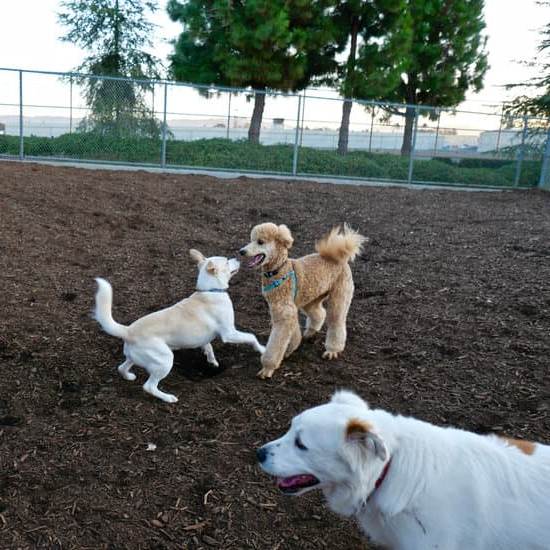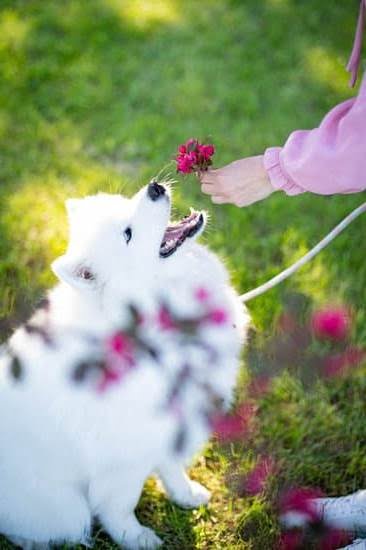Training a dog to recognize its name is an essential aspect of proper pet ownership. It sets the foundation for effective communication, establishes a bond between the owner and the dog, and ensures safety in various situations. Teaching a dog its name may seem like a simple task, but it can have significant implications for both the dog’s well-being and the owner’s peace of mind.
When a dog recognizes its name, it is more likely to respond promptly when called. This ability is crucial for maintaining control over the dog, especially in potentially dangerous situations such as crossing roads or encountering unfamiliar animals. A well-trained dog that responds to its name also enables owners to enjoy outings without constant worry or stress.
Beyond safety considerations, teaching a dog its name also enhances the overall quality of life for both the owner and the furry companion. Having a responsive dog creates opportunities for greater interaction and increased levels of trust between the two parties. Additionally, it allows for more enjoyable experiences such as playing fetch in the park, going on long walks together, or simply having cuddle sessions at home.
In order to reap these benefits, it is important to approach training with patience, consistency, and positive reinforcement techniques.
The following sections will explore various aspects of training a dog to recognize its name, including selecting an appropriate name, creating positive associations with the name, utilizing basic training techniques, integrating fun games and exercises into training sessions, troubleshooting common challenges that may arise, advancing comprehension skills in complex environments, reinforcing name recognition in everyday situations, and finally enjoying the rewards of successful training.
By following these steps and investing time and effort into teaching a dog its name properly, owners can foster strong bonds with their furry friends while ensuring their safety and enjoyment in various settings.
Choosing the Right Name for Your Dog
Choosing a name for your dog is an exciting part of bringing a new furry friend into your life. However, it’s important to choose a name that not only reflects your dog’s personality but also makes it easy for them to recognize and respond to.
In this section, we will explore the factors to consider when selecting a name, the dos and don’ts of picking a dog’s name, and provide tips for finding a name that stands out.
Factors to Consider when Selecting a Name
When choosing a name for your dog, there are several factors to consider. First and foremost, you’ll want to choose a name that is easy for both you and your dog to remember and pronounce. A simple one or two-syllable name can be easier for dogs to process and respond to. Additionally, consider the sound of the name – does it have any harsh or confusing sounds that could potentially confuse your dog?
Another important factor is the length of the name. Longer names may be more challenging for your dog to comprehend and respond to quickly. Opting for shorter names can make it easier for both you and your dog during training exercises and everyday interactions.
Dos and Don’ts of Picking a Dog’s Name
When picking a name for your dog, there are some important dos and don’ts to keep in mind. Firstly, do choose a name that you like and feel comfortable using regularly since you’ll be saying it often. It should also be distinct enough from common commands such as “sit” or “stay” to avoid confusion.
On the other hand, don’t pick a name that sounds similar to another household member’s name or is too similar sounding with other pets’ names. This can cause confusion during training sessions or when giving commands in multi-pet households.
Tips for Finding a Name that Stands Out
Finding a name that stands out can be both fun and challenging. One tip is to consider your dog’s breed, size, and personality traits when brainstorming names. You could choose a name that reflects their appearance or the characteristics of their breed. For example, “Shadow” for a black-colored dog or “Rusty” for a red-haired dog.
You could also get creative and think outside the box. Consider unique names inspired by mythology, literature, movies, or even personal interests. Just ensure that the name is easy to pronounce and remember while aligning with your dog’s identity.
Remember that ultimately, the most important thing is to choose a name that you love and that perfectly suits your furry friend. Taking the time to carefully select the right name will set a solid foundation for successful name recognition training in the future.
Creating Positive Associations with the Dog’s Name
When it comes to training a dog to recognize its name, creating positive associations is key. By associating their name with something positive, such as treats or rewards, dogs are more likely to respond consistently and enthusiastically when called. Here are some effective techniques for building these positive associations:
One of the most common methods for creating positive associations with a dog’s name is through the use of treats and rewards. Whenever you call your dog by its name, immediately follow it up with a treat or reward that your dog loves. This helps the dog understand that responding to its name leads to something enjoyable and reinforces the behavior.
Consistency is crucial when creating positive associations. Make sure to use your dog’s name in a positive tone every time you interact with them. Whether it’s during playtime, mealtimes, or training sessions, using their name in a cheerful and upbeat manner helps build a strong correlation between their name and pleasant experiences.
In addition to treats and rewards, training techniques can also be used to reinforce the association between the dog’s name and positivity. One effective technique is known as “name game.” To play this game, simply say your dog’s name and wait for them to look at you.
As soon as they make eye contact, reward them with praise or a treat. Repeat this exercise several times throughout the day to further strengthen the association between their name and something rewarding.
| Techniques | Description |
|---|---|
| Using treats and rewards | Associating the dog’s name with something enjoyable |
| Consistency | Using their name in a positive tone during all interactions |
| Training techniques | Playing the “name game” to reinforce the association between their name and rewards |
By utilizing these techniques, you can effectively create positive associations with your dog’s name, making it more likely for them to respond eagerly when called. Remember, patience and consistency are key during this process. With time and practice, your dog will learn to recognize its name and enjoy the benefits of clear communication between you and your furry friend.
Teaching the Dog Its Name
Establishing Eye Contact
One of the first steps in teaching a dog to recognize its name is to establish eye contact. This serves as a foundation for communication between the dog and its owner. To begin this process, find a quiet and distraction-free environment to work with your dog.
Call out your dog’s name in a calm and clear voice, making sure to use a positive tone. As soon as your dog looks at you or makes eye contact, reward them with praise or a treat.
It’s important to be patient during this process, as it may take some time for your dog to understand what you are asking of them. Repeat this exercise several times throughout the day, gradually increasing the duration of eye contact before offering a reward. Consistency is key in teaching this basic technique, so be sure to practice regularly.
Verbal Cues and Hand Signals
Once your dog understands that they should look at you when their name is called, you can begin incorporating verbal cues and hand signals to reinforce their name recognition skills. When calling your dog’s name, consider using a unique tone of voice that stands out from regular conversation. This can help differentiate between casual conversation and when you want their attention.
In addition to verbal cues, hand signals can further enhance your communication with your dog. Use clear and consistent gestures that are easily distinguishable from one another to associate specific actions with their name. For example, holding up an open palm could indicate that you want your dog to sit when their name is called.
Remember to always reward your dog when they respond correctly to both verbal cues and hand signals. Positive reinforcement is essential in building a strong association between their name and appropriate responses.
Common Mistakes to Avoid
During the training process, it’s important to be aware of common mistakes that may hinder your progress in teaching the dog its name recognition skills. One mistake to avoid is using the dog’s name in a negative or disciplinary context. Doing so can create confusion and cause your dog to associate their name with punishment, making them less likely to respond positively when called.
It’s also important to avoid repeating their name too many times without eliciting a response. This can lead to your dog becoming desensitized to their name and ignoring it altogether. Instead, be patient and wait for eye contact before rewarding them.
Additionally, consistency is key in training a dog to recognize its name. Make sure all members of the household use the same name for your dog and follow the same training techniques. If different names or inconsistent training methods are used, it can confuse your dog and impede their progress in learning their name.
By following these basic techniques and avoiding common mistakes, you can lay a solid foundation for teaching your dog its name recognition skills. Remember to have patience and celebrate small wins along the way as you work towards having a well-trained dog that responds reliably when called.
Name Recognition Games and Exercises
Training a dog to recognize its name can be made even more effective and enjoyable through the use of games and exercises. These activities not only reinforce the dog’s ability to respond to its name but also make the training sessions more engaging and exciting for both the dog and the owner. Here are some fun name recognition games and exercises that can be incorporated into your training routine:
- Treat Toss: This game involves tossing treats in different directions while calling out the dog’s name. Start with small distances within a controlled environment, gradually increasing the distance and introducing distractions as your dog becomes more proficient. The goal is for the dog to quickly turn its attention towards you when it hears its name.
- Hide-and-Seek: Hide-and-seek is a great game for reinforcing name recognition skills while also providing mental stimulation for your dog. Have someone hold onto your dog while you hide in another room or behind furniture. Call out your dog’s name and wait for it to come find you. Reward the successful find with treats or praise.
- Name Relay: Set up two or more people in separate areas of a room or outdoor space. Each person should have some treats or toys as rewards. Take turns calling the dog’s name, and when it comes to each person, reward it with treats or playtime. This game helps solidify the association between multiple voices calling their name and positive experiences.
These games can be adapted to suit your specific training needs and your dog’s preferences. It is important to keep sessions short, positive, and rewarding to maintain your dog’s interest and enthusiasm.
| Name Recognition Games | Description |
|---|---|
| Treat Toss | Tossing treats in different directions while calling out the dog’s name. |
| Hide-and-Seek | Hiding while calling out the dog’s name and waiting for it to find you. |
| Name Relay | Multiple people taking turns calling the dog’s name and rewarding it when it comes to each person. |
In addition to these games, incorporating commands and activities into your training sessions can further reinforce name recognition skills. For example, when teaching basic commands like sit or stay, use the dog’s name before giving the command. This helps the dog understand that its name is associated with specific actions or behaviors. It is important to keep training sessions varied and challenging by introducing new exercises or gradually increasing difficulty levels.
To ensure that training sessions remain engaging and exciting for your dog, consider using a mix of verbal cues, hand signals, toys, and treats as rewards. This helps maintain their interest and motivation throughout the training process. Additionally, always remember to provide plenty of praise and positive reinforcement when your dog successfully responds to its name or performs desired behaviors.
The key to successful name recognition training games and exercises lies in consistency, patience, and persistence. Regularly practice these activities with your dog in different environments to enhance their ability to respond reliably in real-life situations. By making training enjoyable and interactive, you’ll not only strengthen the bond between you and your furry companion but also have a well-trained dog that responds confidently to its name.
Troubleshooting Common Challenges in Name Recognition Training
Training a dog to recognize its name can come with its fair share of challenges. However, by being aware of these common obstacles and having the right strategies in place, you can effectively troubleshoot and overcome them. Here are some of the most common challenges dog owners may face during name recognition training, along with tips on how to address them:
- Overcoming distractions and maintaining focus: Dogs are naturally curious creatures and can easily get distracted by their surroundings. To tackle this challenge, it’s essential to start training in a quiet, controlled environment with minimal distractions. Once your dog has mastered responding to its name in this setting, gradually introduce more distractions, such as toys or food, while continuing to reinforce the association between their name and positive experiences.
- Dealing with stubbornness or resistance during training: Every dog has its own personality, and some may be more stubborn or resistant than others when it comes to learning new commands. If your dog seems uninterested or refuses to respond during training sessions, try using higher-value treats or rewards to motivate them. Additionally, breaking down the training into smaller steps and rewarding small successes along the way can help build confidence and encourage cooperation.
- Patience and persistence: key factors for successful training: Training takes time and consistency is key. It’s important not to get discouraged if progress seems slow or if your dog is struggling with certain aspects of name recognition training. Remember that every dog learns at its own pace, so be patient and persistent in your efforts. Set aside regular daily training sessions that are short but frequent for maximum effectiveness.
By addressing these common challenges in name recognition training head-on, you can set yourself up for success in teaching your dog to respond reliably to its name. Remember that patience, consistency, and positive reinforcement are crucial throughout the process. With determination and a bit of troubleshooting along the way, enjoy watching your furry friend master this valuable skill.
Advanced Name Recognition Training
Once your dog has mastered the basics of name recognition, it’s time to take their training to the next level with advanced techniques. Advanced name recognition training is essential for ensuring that your dog can respond to its name in complex environments and situations. This section will provide you with the tools and strategies needed to reinforce and expand upon your dog’s name recognition skills.
To begin advanced training, gradually increase the difficulty level of exercises and distractions. Start by introducing mild distractions, such as toys or treats, while practicing name recognition. Slowly progress to more challenging environments, such as a park or a busy street, where there may be numerous sights, sounds, and smells competing for your dog’s attention. By exposing your dog to these distractions gradually, you help them learn to focus on their name amidst various stimuli.
Another technique for advanced name recognition is employing distance commands. Start by teaching your dog to respond to their name when you are at a normal distance from them, then gradually increase the distance between you. Utilize a long leash during training sessions so that you can give commands from different distances without losing control over your dog. This encourages your dog to recognize their name across various distances and strengthens their response in real-life scenarios.
Advanced techniques for reinforcing name recognition also include incorporating obedience commands into training sessions. For example, practice having your dog respond to their name before giving any other command or instruction. This reinforces the association between their name and immediate attention or action. It also enhances their overall responsiveness during training and in everyday situations.
Remember that patience and persistence are key factors in successful advanced training. Some dogs may require more time and practice than others, so be prepared for setbacks along the way. Consistency is crucial – make sure everyone in the household is using the same cues and reinforcing positive behaviors using the dog’s name.
By incorporating these advanced techniques into your dog’s training regimen, you will have a canine companion who can reliably respond to their name in a wide range of situations. This enhanced name recognition will not only deepen the bond between you and your dog but also ensure their safety and obedience in various environments.
So, don’t hesitate to take your dog’s training to the next level and enjoy the benefits of having a well-trained, responsive furry friend.
Reinforcing Name Recognition in Everyday Situations
Once your dog has mastered the basic techniques of name recognition training, it’s important to reinforce their skills in everyday situations. This will ensure that your dog responds reliably to their name, even in environments with distractions or high levels of stimulation. By applying name recognition training in real-life scenarios, you can enhance your dog’s obedience and improve their overall behavior.
One effective way to reinforce name recognition is by incorporating it into daily activities and routines. For example, when you are feeding your dog, use their name before placing the bowl down. This helps them associate their name with a positive experience and reinforces their responsiveness. Similarly, when you want your dog to come inside after being let outside, call out their name and reward them with praise or a treat when they respond promptly.
Consistency is key when reinforcing name recognition in everyday situations. Make sure that everyone who interacts with your dog uses their name consistently and correctly. This will prevent any confusion or inconsistency in your dog’s understanding of their own name. Additionally, try to use your dog’s name sparingly throughout the day to maintain its importance and effectiveness.
Another valuable aspect of reinforcing name recognition is using it for both positive reinforcement and correction purposes. When your dog exhibits good behavior, such as sitting calmly or following a command, praise them enthusiastically using their name as a cue for reinforcement.
Conversely, if your dog engages in unwanted behavior like jumping on people or chewing on furniture, use a stern tone while saying their name as a form of correction. This consistent association between their name and consequences will help reinforce desired behavior patterns over time.
By consistently applying the techniques learned during training, you can enjoy the benefits of having a well-behaved companion who responds reliably to their name. Remember that reinforcement is an ongoing process that should be integrated into everyday interactions with your dog. With patience and persistence, you’ll witness the transformation from a novice learner to a dog that consistently recognizes and responds to their name.
Conclusion
In conclusion, training a dog to recognize its name is a valuable investment of time and effort that can yield numerous benefits for both the dog and its owner. Throughout this article, we have highlighted the importance of teaching a dog its name and the positive impact it can have on communication and obedience.
By consistently using techniques such as creating positive associations, employing basic training techniques, playing name recognition games, and troubleshooting common challenges, owners can successfully train their dogs to respond reliably to their names.
Having a dog that responds promptly to its name not only enhances the bond between owner and pet but also ensures safety and control in various situations. Whether it’s calling your dog back in a crowded park or preventing them from running into traffic, name recognition plays a vital role in maintaining their well-being. Additionally, it allows for more effective communication during training exercises, making it easier to teach new commands and tricks.
Furthermore, enjoying the fruits of name recognition training brings immense joy and satisfaction. Seeing your dog eagerly respond to their name is rewarding in itself, showcasing the success of your dedicated efforts. You will experience greater confidence in taking your furry companion out in public or introducing them to new environments knowing they will heed your call when needed.
Therefore, we encourage all readers who are considering getting a dog or already have one to start implementing name recognition training. With patience, consistency, and perseverance, you can transform your dog into an attentive and responsive companion. Remember that each dog is unique in terms of learning pace and temperament; thus, tailor your training approach accordingly.
Ultimately, by investing time and effort into teaching your furry friend its name using the techniques outlined in this article, you will undoubtedly reap the rewards of improved communication, enhanced obedience, and an unbreakable bond with your canine companion. So why wait? Start today and enjoy the lifelong benefits of having a well-trained dog that recognizes its name.
Frequently Asked Questions
How long does it take a dog to learn their name?
The time it takes for a dog to learn their name can vary depending on various factors such as the individual dog’s personality, previous training, and the consistency of name reinforcement. Generally, with consistent and positive reinforcement, dogs can start recognizing their name within a few weeks.
However, it is essential to remember that all dogs are different, and some may pick it up quicker while others may take longer. Consistency and patience are key when teaching a dog its name.
Will a dog naturally learn their name?
Dogs do not naturally learn their names without any training or reinforcement from their owners. While they might respond to certain sounds or tones of voice, they do not inherently understand that those sounds refer to them personally.
Teaching a dog their name is an important part of establishing communication and building a bond between the owner and the pet. By consistently associating the sound of their name with positive experiences like treats or praise, dogs can learn to recognize and respond to their given name.
Is it OK to rename a rescue dog?
It is generally acceptable to rename a rescue dog if necessary or desired by the new owner. Renaming a rescue dog can be helpful in creating a fresh start for the animal and allowing them to associate their new environment with positive experiences. However, it’s essential to consider the emotional impact this change may have on the dog.
It is recommended to introduce the new name gradually while still using elements of their old name during an adjustment period. The most crucial aspect in renaming a rescue dog is ensuring that they receive plenty of positive reinforcement during this transition phase so that they have a positive association with their new name.

Welcome to the blog! I am a professional dog trainer and have been working with dogs for many years. In this blog, I will be discussing various topics related to dog training, including tips, tricks, and advice. I hope you find this information helpful and informative. Thanks for reading!





